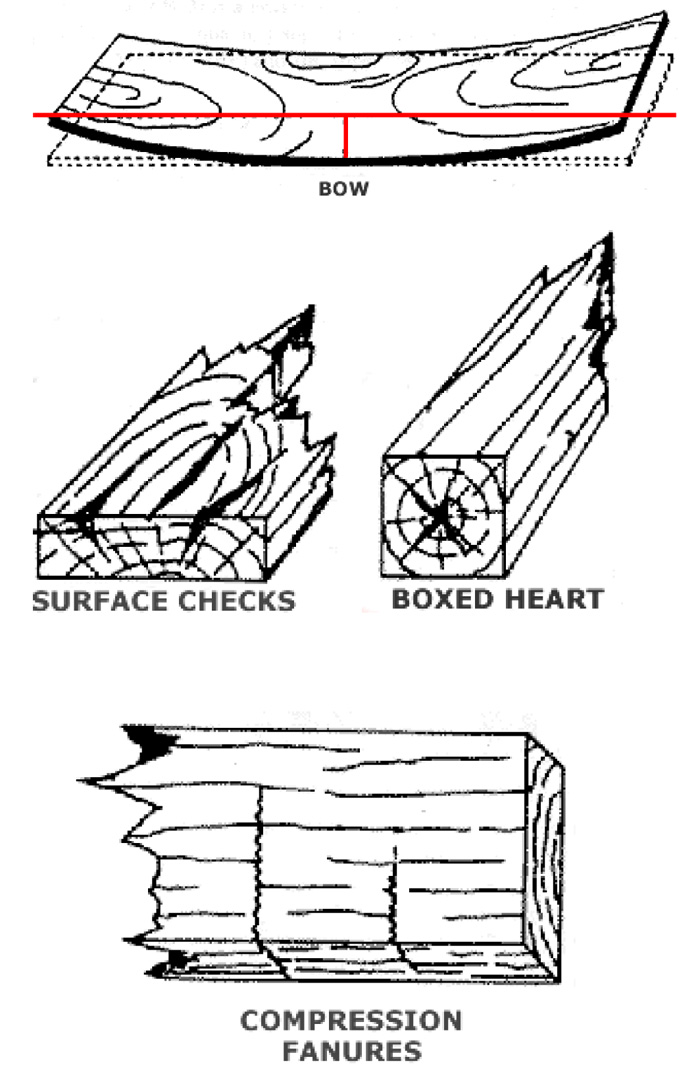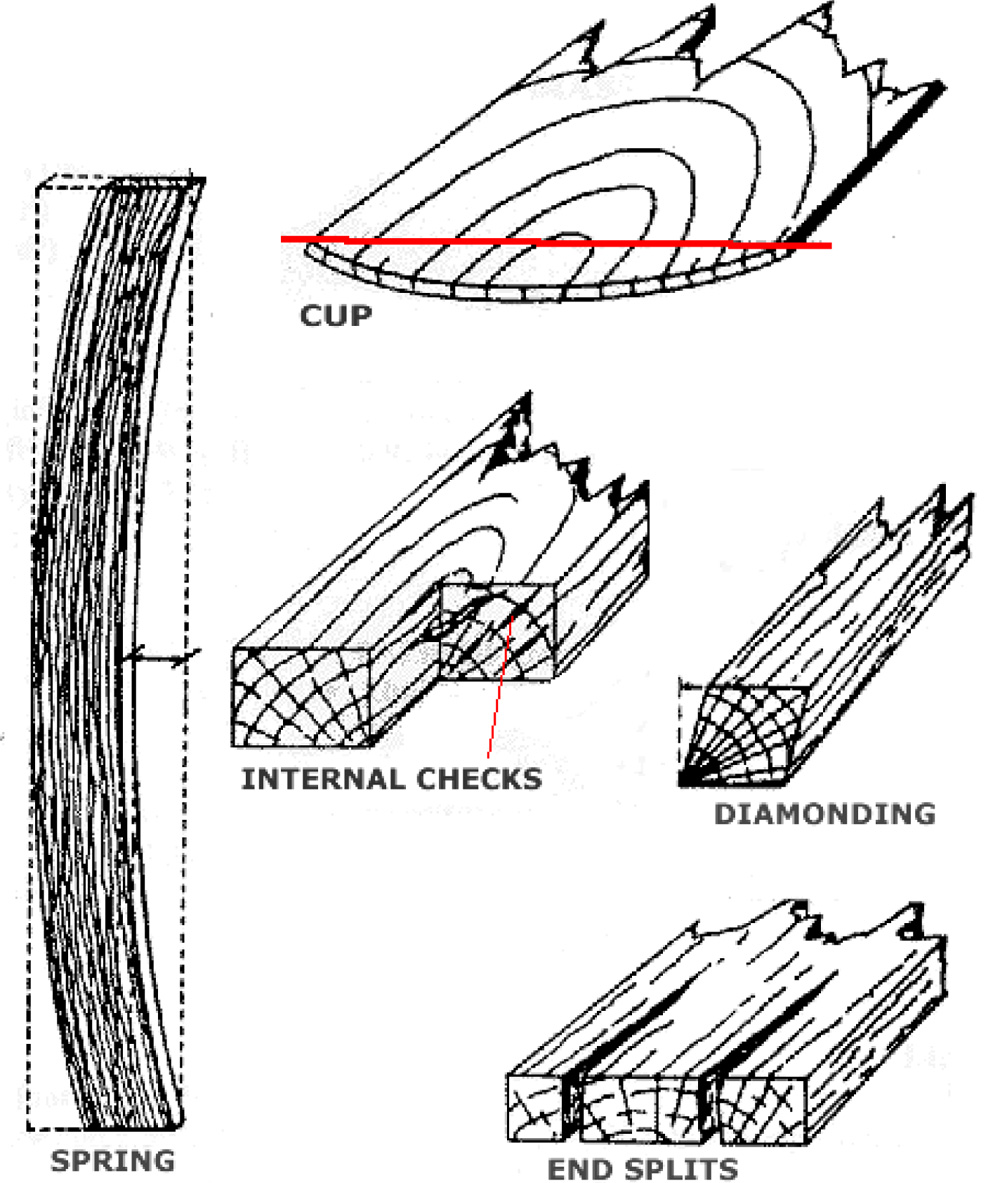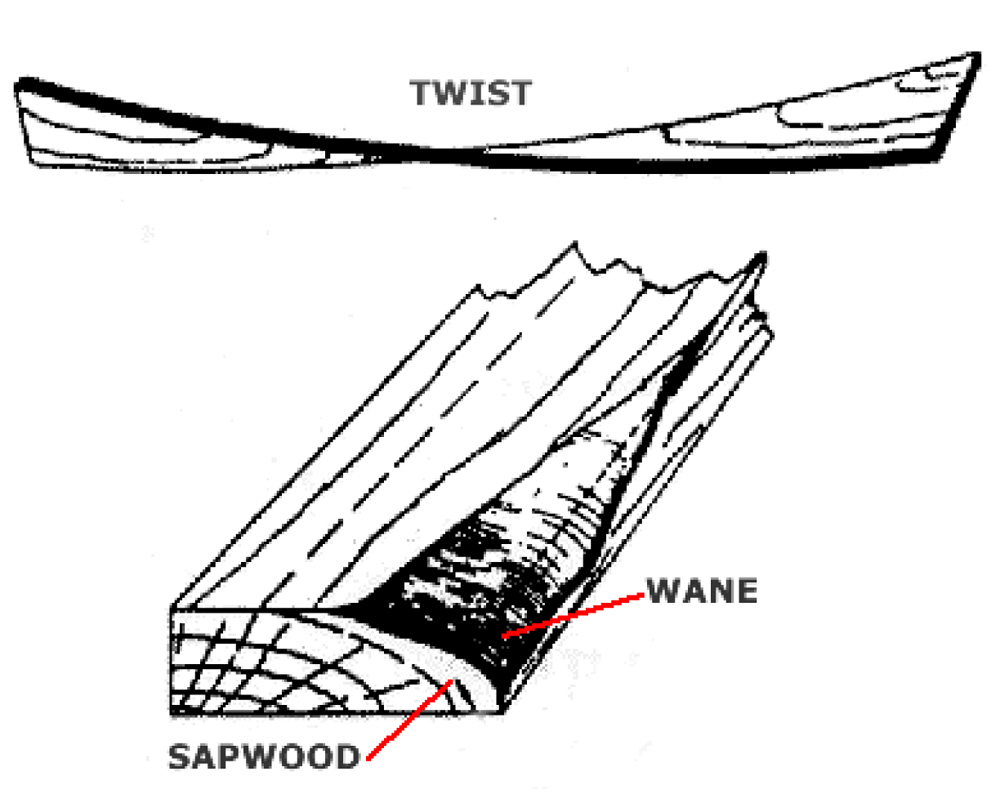
Timber is far from being a stable and consistent material. One of the biggest challenges of working with timber is learning to work within the constraints of a timber’s. The following are a list of the most common wood defects.
Bow (Bowing)
The curvature of a piece of sawn timber in the direction of its length, cf. Spring and Curvature.
Boxed Heart
A term used when the heart is enclosed within the four surfaces of a piece of sawn timber. Well boxed Heart means that the heart is enclosed within the four surfaces of piece of sawn or hewn timber throughout its entire length, and is reasonably well centered at both ends.
Checks
Are small separations of the wood fibers in a longitudinal Wood Defects direction, not penetrating as far as the opposite or adjoining side of a piece of sawn timber; they usually result from strains developing during seasoning; Surface (or Seasoning) Checks, and End (or Heart) Checks are distinguished.
Compression Fanures
Are fractures across the grain in which the fibers are broken transversely or are crushed by compression. Various causes are suggested, such as felling across obstructions, and failure inside the growing tree caused by high winds, growth stresses, etc. ls also known as Felling Shakes, Thunder, Rupture, Lightning, and Transverse Shakes, Upsets, Cross Breaks, or Cross Fractures. Very often they are difficult to detect until the timber is dressed.
Cup (Cupping)
The curvature of a piece of sawn timber across its width.
Diamond (Diamonding)
A distortion due to differential shrinkage in drying that causes a piece of timber originally square (or rectangular) in cross section to become diamondshaped. This defect occurs when the rays pass through diagonal corners of the square (or rectangle) and is caused by the difference between tangential and radial shrinkage which in many timbers is in the proportion of about 2:1.
Honeycomb
(Internal Checks) The development of checks in the interior of a piece of wood due to drying stresses, usually along the wood rays, often not visible at the surface. This defect occurs when thick timber is dried too quickly in a seasoning-kiln.
Split (also known as a Shake)
Is a longitudinal separation of the fibers which extends to the opposite face or adjoining edge of a piece of sawn timber.
Spring
Is the curvature of a piece of sawn timber in the plane of its wide face: known as Crook or Free Side Bend.
Twisting
Is the spiral distortion of a piece of sawn timber; it may be accompanied by either bowing or spring, or both.
Wane (Want)
Is the lack of wood on any face or edge of a piece of sawn timber, usually caused by a portion of the original rounded surface of a long remaining on the piece; bark may or may not be present.
Defects that exist in timber make the planer’s job more difficult and create a need for secondary machinery to produce quality products. It would be nice to be able to feed any piece of rough timber into a moulder and produce a perfect product, free from defects, but this seldom happens.
The numerous processes required to work timber free of defects are well known to the furniture, moulding, flooring and architectural woodwork industries. Most companies split their manufacturing operations into a rough mill and a finish mill. The job of the rough mill is to break down the timber to more uniform sizes and pre-work the main defects from the wood. The following section details the different types of planning processes and discusses the operations in the rough mill.
Slope of Grain
Localised slope of grain can be caused by knots. Slope of grain can also be caused by a slight bend in the tree, which means that when a straight board is cut out of it, there is a bend in the grain. This tends to be a longer feature and may go unnoticed in an appearance product.
Some species of Australian hardwoods (such as Jarrah and Blackbutt) can have “wavy grain”. This gives a very attractive rippled appearance in high surface finish applications.
Where timber is “backsawn”, the slope of grain can give interesting effects in the growth rings that enhance the appearance of the timber for some applications.




